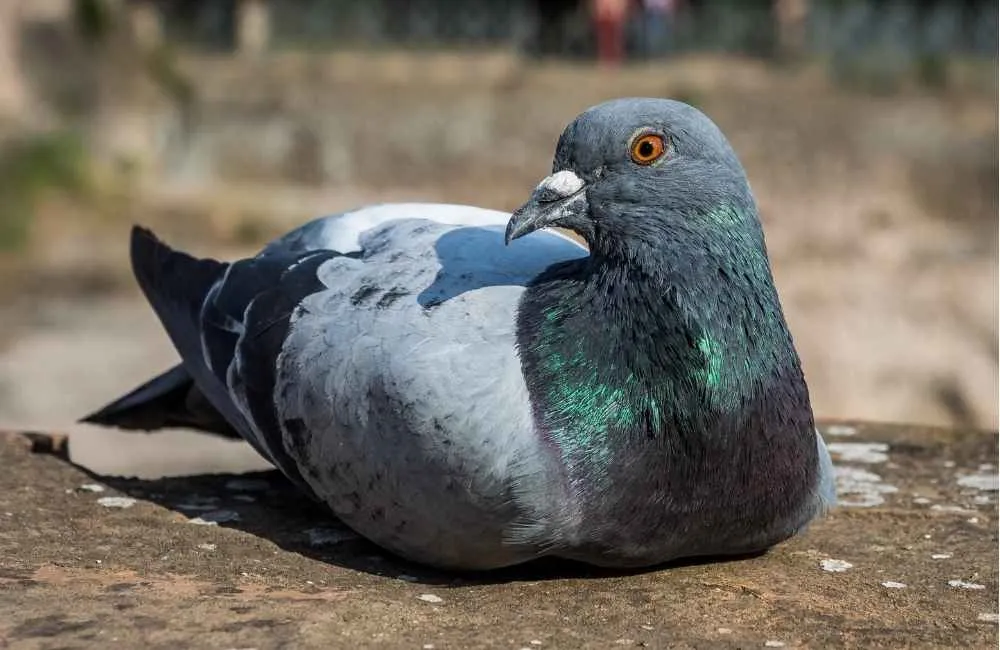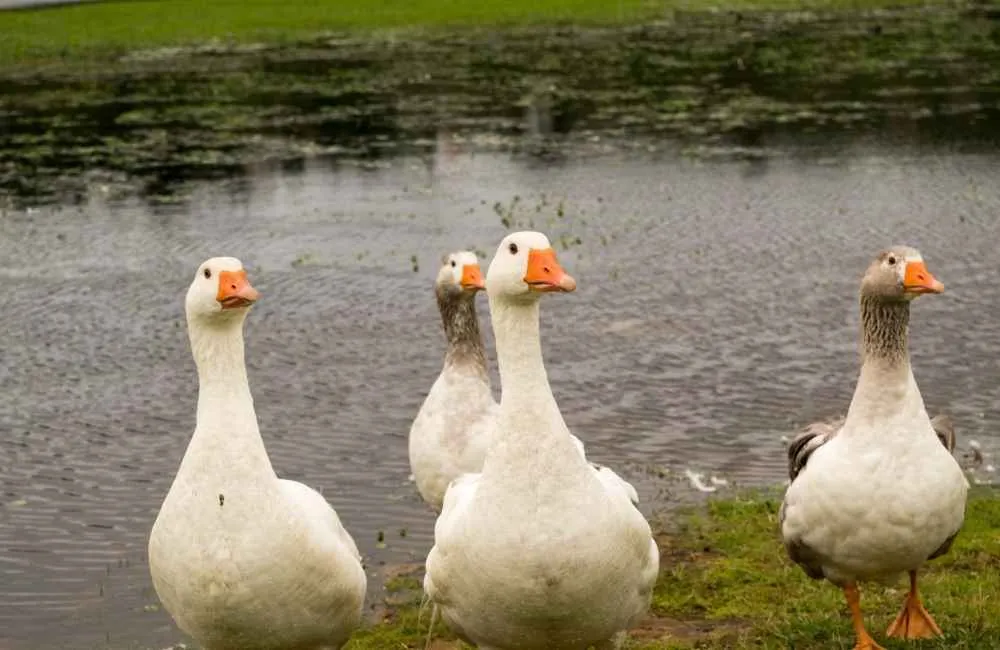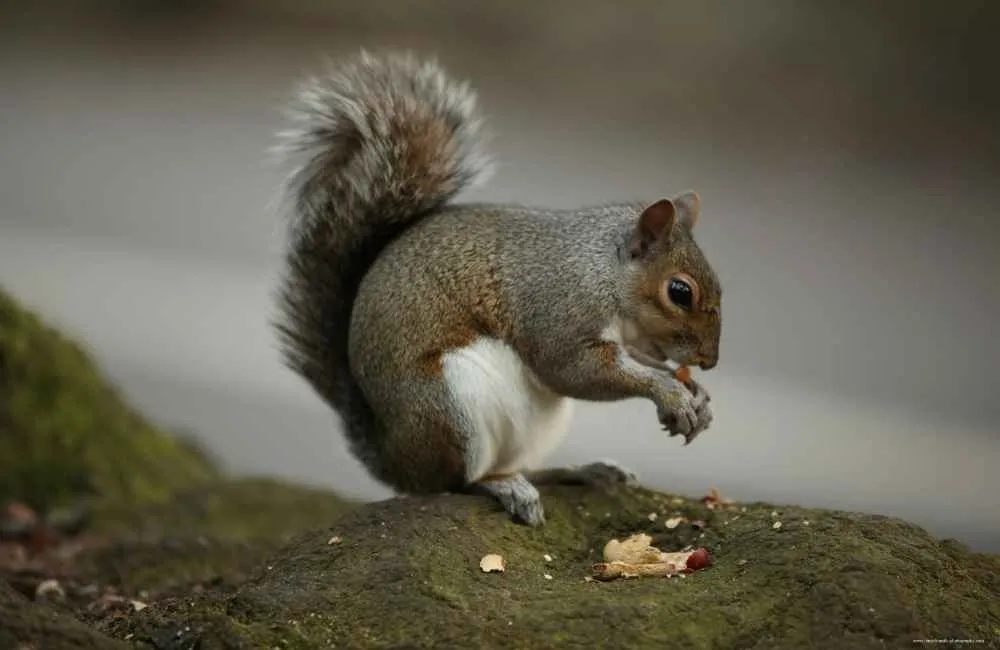How organized are you? Is your house always clean, do you plan your meals, or do you schedule every event in your calendar? If not, I’m not judging — there are times when I struggle with organization myself! However, we humans are not the only species that likes to be organized, no matter how successful at it we actually are.
That’s right, there are quite a few animal species that are little (or big) experts at being organized, whether it’s through their hunting, social hierarchy, or other lifestyle habits.
While this list is by no means exhaustive and I’m sure there are more to be found, I’ve compiled the top 16 most organized animals for you to draw inspiration from (or relate to). Read on to find out which animals are the best little organizers around — you might be as surprised as I was!
1. Pigeons

While some might consider them gross, a nuisance, or even “rats with wings,” Pigeons are actually quite incredible birds. Yes, they annoy us for food in urban areas, and yes, they’re often found in abundance in dirty, polluted places.
But if you look a little closer at the Pigeon, you’ll find they’re actually quite organized — and very intelligent. Homing Pigeons, for example, can be taught to fly home in an organized flock; sometimes from distances as far as 1,000 miles away!
While these guys are a distinctive breed and are trained to accomplish this (which is still incredibly impressive in my opinion), other Pigeons have similar levels of intelligence.
When a flock takes flight together, they communicate direction, speed, and destination with each other based on what the most beneficial landing spot might be. If one Pigeon notices a problem enroute, they communicate that, too, and the whole flock adjusts accordingly. Sounds pretty organized if you ask me!
2. Starlings

Another bird that might be deemed a nuisance by some, Starlings are another amazing species that deserve a mention on this list.
The main reason I’ve decided to include them is for the captivating display that many living in Starling territory know all too well: the murmuration. If you’ve never seen a Starling murmuration, you have no idea what you’re missing! This dance of elegance, organization, and amazing accuracy between thousands of birds is a sight to behold, that’s for sure.
Starlings perform their murmuration when the weather begins to grow colder, and it’s the last activity they participate in before hunkering down for the night.
It’s thought that Starlings perform this glorious act to appear bigger to predatory birds such as Falcons and Hawks, giving them less of a chance to pick one off from the flock. It’s also believed to act as a signpost for any stragglers, letting them know it’s time to come home for the night. Either way, it’s spectacular!
3. Geese

Ever look up in the sky just as a gaggle of Geese are passing over? Then you’ve noticed that they’re usually in a v-formation, right?
I always assumed that this was just their way of keeping the leader in front of the subordinates, but it turns out there are more purposes for this flight pattern than I thought! While Geese might appear to exist simply to peck at grass and terrify innocent bystanders, they’re actually a very clever — and organized — species.
Apparently, the v-formation serves two distinct purposes: energy conservation, and visual advantage. In the v, each bird flies slightly lower than the one in front of it.
Why? To control the airflow, of course! Each Goose essentially blocks the air from the one following it, allowing the flock as much aerodynamic advantage as possible.
Also, when in a v-formation, each Goose can see one another. This lets them keep track of the rest of the gaggle, making sure no one gets left behind! Who knew Geese could be so compassionate?
4. Emperor Penguins

The Emperor Penguin is another deserving species of a spot on this list. Why? Their migration habits. These guys make the trek every year to distances of up to 100 miles away from their home base in order to reproduce, find food, and then return to start all over again the following year!
While many bird species migrate to warmer places when the weather temperatures drop, the Emperor Penguin is a special case. Their organizational skills are impressive, to say the least!
The sight of an Emperor Penguin migration is quite different from many others. For starters, these guys can’t fly. This means they walk those 100 miles, in an organized line, all at the same time!
Once they arrive, they’ll huddle together to brave the chilling temperatures, while the males starve for 3 months to incubate their eggs. On top of this, each daddy Penguin knows their own baby amongst all the others, as their brains are programmed to recognize the specific cry of their offspring!
5. Western Scrub Jays

Though they might look familiar, Western Scrub Jays are not to be confused with their similar-looking relative, the Blue Jay.
While they do have several traits in common, the Western Scrub Jay wins the spot on this list for its coveted organizational skills. To start with, Western Scrub Jays are experts at organizing their food stores.
They’re known to have amazing memories, remembering their storage sites in chronological order, and making a point of visiting the oldest ones first to avoid spoiled food. I know a few humans who would benefit from this habit!
These little birds are also quite sentimental: when a member of the flock dies, they’ll stand around it and squawk to alert the others — like sending invitations to a funeral.
They’ll then proceed to stand guard around the body of their dead loved one for several days, warding off any would-be predators with a hazing attack, which is basically flying towards them aggressively until they finally get the message to stay away.
6. Ants

While you’re probably all too familiar with how ants organize (like when they march on your pantry in a military fashion), there’s more to their skills than meets the eye.
Ants are quite adept at communicating with one another, and even have a systemic hierarchy that determines who performs which job. While the Queen is obviously responsible for laying new eggs to populate the colony, the other ants divide tasks based on age, sex, and ability. So interesting!
Young worker ants will generally stay home and tend to the babies in the colony, while the older workers head out and scout for food or collect material for the colony.
They also communicate with each other via a chemical signature, allowing them to stay informed on who’s doing what, where, and when, and whether they need assistance (when finding food, for example). They’re also experts at organizing for battle, being ready to defend the colony from intruders at a moment’s notice!
7. Bees

Like ants, bees operate in a colony fashion, with a Queen at the top of the hierarchy. She’s served by worker bees and drones, who each have their own important duties to perform.
Again, like ants, bees have jobs that match their age and sex, but these are slightly different. Honey production is a full-time job, after all! Obviously, the worker bees collect the nectar that eventually becomes honey, but not until they’re old enough.
Young female bees work in the nursery taking care of the babies, as well as tending to the Queen’s needs. Then there are the drones — the adult male bees that are tasked with one job: to further the bee population.
They work very hard at this by scouting the environment for new Queens every single day. Drones have extra-large eyes to help them spot their target, and don’t have stingers so as to not pose a threat to their newly betrothed. So well-organized!
8. Spiders

We all know the intricacies of a spider’s web — they’re beautiful, tiny architectural masterpieces. But did you know that the effort put into weaving a web is actually an extremely well-planned, organized process? It’s true!
Apparently, spiders are not gifted with only one type of silk to weave their webs. Some species can possess up to twenty, giving them plenty of options for web weaving!
The process is super intense and is usually performed at night, when predators can’t see the spider slaving away.
The different types of silk all have their own purpose. Strong silk is used for the foundation of the web and is the first step.
The next step is to outline the middle of the web in a path formation for the spider to use and is purposely non-sticky, so the spider won’t get stuck.
The last step is the middle, constructed of the stickiest silk the spider produces, and where the unsuspecting prey will get caught. Who knew spiders were such little geniuses?
9. Beavers

Whomever coined the phrase “busy as a beaver” was right on track — these guys are always up to something. It may be annoying to those dealing with the fallout, but beavers build dams for a purpose: to create ponds for their families to live in.
It makes sense, as beavers can’t survive without a water source, but it’s understandably difficult to deal with when the dams divert rivers and streams into undesirable directions! That being said, the dam building process is quite an organizational feat.
In order to build a dam, a beaver colony has to work as a team to cut down trees (with their massive teeth), weave branches together, and bolster their creation with mud. On top of that, they also build their own homes, affectionately called “lodges.”
These genius little huts are created with grass, sticks, and mud, and even include a back door for easy water access! Annoying they may be, but you have to give it to beavers — they’re quite the little construction crew!
10. Squirrels

While everyone knows the squirrel stores food for the winter, many of us aren’t fully aware of how organized these cute little guys actually are.
Yes, they “squirrel away” acorns and other nuts starting in the spring so winter will be fruitful, but they’re also known to store different types of food in separate places. Called “caches,” these stores are usually placed around the squirrel’s nest — for easy access when winter rolls around.
Another incredibly smart and well-organized trait squirrels possess: they cleverly defend their food stores from their sneaky neighbors.
They’ll dig a new cache while other squirrels are watching, but only pretend to bury food. This way, when the thieves come around, they’ll find bare cupboards; leaving only one squirrel knowing where the food is stored: the one who stored it!
And we thought these smart little guys were all about eating acorns. They’re a lot more prepared than we give them credit for!
11. African Wild Dogs

Not to be confused with the hyena, African wild dogs are yet another well-organized species. Sadly, their population has declined rapidly in recent years, but the remaining members are doing their best to stick around.
One of their highly organized traits is the way they care for their pups: instead of just the mother and/or father dog taking responsibility for babies in the pack, the whole clan gets involved. They take turns bringing babies and mom food, and when pups are old enough to eats solids, they get first crack at the fresh kill!
The hunting process is also incredibly well-planned, and changes based on the specific prey they’re after. They’ll panic a herd of wildebeest to pick off a weakling or chase an antelope in circles while another member of the pack cuts it off mid-stride.
These guys may be declining in numbers, but they’re the ultimate survivors, that’s for sure. Hopefully, their population will make a comeback sooner than later!
12. Water Buffalo

Distant relatives of the cow, water buffalo look a lot like a normal bull. However, you won’t find a bull with horns quite as impressive as these — unless it’s a long horn, that is! Water buffalo live in herds, with all members following a leader.
However, this isn’t the extent of their organizational skills! They’re actually quite complex, dividing the herd by age and gender, similar to a human child coming of age and leaving their parents’ house.
The herd structure is divided into males and females, but there’s a catch: young water buffalo stay with their mothers until they’re around three years old.
This means that some inter-mingling of genders happens at times, but once the boys are all grown up, they move in with the men. The male herds are significantly smaller than the female herds — females and juveniles get up to about thirty members whereas males will only allow around ten members into their group.
13. Lions

A pride of lions is predominantly female, with the ladies doing most of the work. These ferocious felines are well-organized hunters, but that’s not the only trait that gets them on this list.
They’re also quite formal in a few ways, starting with the way potential new pride members are initiated. There’s a greeting ritual that must be initiated by the newcomer, and if they choose not to greet the others, they’ll be treated like an intruder — which is never a good thing!
Also, mother lions leave the pride to give birth to their cubs and will only return if any existing cubs are less than three months old.
Why? To protect them! Lion cubs will nurse from any mother lion, and older cubs bully the younger ones to gain access to milk.
Lastly, lions organize their hunting grounds around the terrain and weather. When there’s more access to food and water, they span out into a larger area. When resources are scarce, they’ll stick to a smaller space. So clever!
14. Dolphins

Funny, acrobatic, and adorable, dolphins are also quite the organized bunch. While seeing them perform incredible tricks is a great laugh, there’s more to this marine mammal than flips and jumps. Dolphins are a community-focused species, living and traveling in groups called pods.
There have been solo dolphins seen on occasion, but this is rare. Their pod lifestyle is beneficial in several ways, such as protection from predators, socialization, and locating food. Their pod members take turns sleeping, so someone’s always on guard against predators.
They separate their pods into groups by age and sex, similar to water buffalo. But dolphins take their social structure one step further: they have an additional group for the juveniles — male and female.
These dolphins then go on to join the male and female pods as they grow older. Dolphins are also quite organized hunters — they create rings of bubbles around their prey to force them into a specific area, allowing them to attack!
15. Orcas

Orcas are often called killer whales, but only one part of that is actually right. The largest member of the dolphin family, orcas are known for their vicious hunting style and relentless pursuit of their prey.
But did you know there’s more to their violent feeding habits than meets the eye? That’s right — orcas are extremely well organized in their quest for food. Depending on the type of orca, there are two specific ways these guys hunt, and they’re both incredibly smart.
Orcas that hail from the northeastern Pacific Ocean eat fish, which they “herd” into a small area. They then stun them with a tail slap, allowing them to eat at their leisure. Other orcas that are found in places like New Zealand enjoy dining on other marine mammals like seals and sea lions.
They’ll work together to create waves that knock their prey off floating ice, leaving them defenseless. They’ve even gone so far as to purposely beach themselves, grab their prey, and wiggle backwards into the water again!
16. Sea Otters

Sea otters are a super adorable species, but they’re also incredibly clever. Their organizational skills are essential to their survival, and they use them to their advantage in the smartest ways.
Aside from the irresistible act of holding hands while sleeping to avoid floating away from their families, they also wrap themselves up in seaweed and kelp if there are no other sea otters around to help them out. Taking safety precautions before going to sleep? That’s what I call organized!
Sea otters are also organized in other ways: they use nearby rocks to smash open their prey which consists of invertebrates like crabs, snails, and other shelled creatures.
They also utilize the flaps of skin under their arms as a carrying mechanism when diving for food, conserving energy, and making sure they carry as much food home as they possibly can. I have to say, knowing all their organization habits makes them even cuter than before, which I didn’t think was possible!

